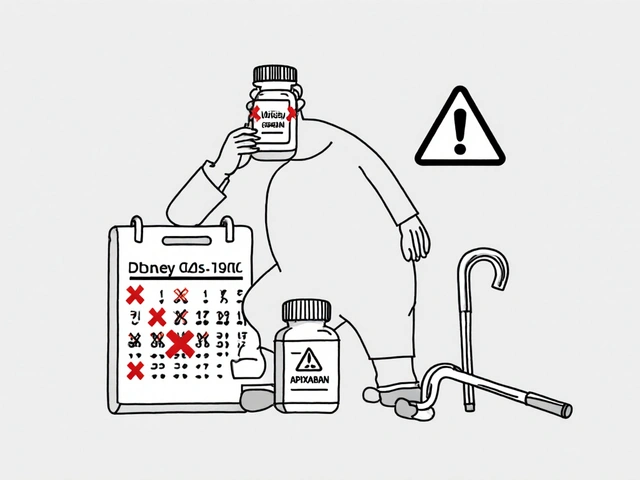Oral Semaglutide – A Simple Guide
If you’ve heard about the new pill that acts like a needle‑based diabetes drug, you’re probably thinking about oral semaglutide. It’s a GLP‑1 receptor agonist that comes in a tablet you can swallow instead of injecting. That alone makes a lot of people curious, and for good reason. The pill promises tighter blood‑sugar control, modest weight loss, and fewer needles in the bathroom.
Let’s break down the basics, so you know if this option could fit into your routine. We’ll cover how it works, who usually gets it, the typical dose schedule, and the side effects you might notice. By the end, you’ll have a clear picture of whether oral semaglutide is worth a chat with your doctor.
How Oral Semaglutide Works
Semaglutide belongs to the GLP‑1 (glucagon‑like peptide‑1) family. In the gut, GLP‑1 is released after you eat, signaling the pancreas to release insulin and telling the brain you’re full. The injectable form has been around for a while, but the oral version adds an absorption enhancer called SNAC that protects the drug from stomach acid and helps it slip into the bloodstream.
Once it’s in the blood, semaglutide does three main things: it boosts insulin when glucose is high, curbs glucagon (a hormone that raises blood sugar), and slows down stomach emptying. The slowdown means you feel full longer, which is why many users see a few pounds drop off.
Because the pill is taken once a day on an empty stomach, timing matters. You should take it with a small sip of water, wait at least 30 minutes before eating or drinking anything else. Skipping this window can reduce how much of the drug actually gets absorbed, which may blunt its effect.
Getting Started and What to Watch For
Doctors typically prescribe oral semaglutide for adults with type 2 diabetes who need better glucose control or want to lose weight. The starting dose is usually 3 mg daily for the first 30 days – a “run‑in” dose that lets your body get used to the medication. After a month, the dose steps up to 7 mg, and many patients move to the full 14 mg dose after another month if they tolerate it well.
Side effects are mostly gastrointestinal. Nausea, vomiting, and diarrhea are the most common, especially during the first few weeks. They often ease as your body adjusts. If you have a history of pancreatitis, gallbladder disease, or severe stomach issues, bring it up with your provider because semaglutide can aggravate those conditions.
Another practical tip: keep a pill diary. Note the exact time you take the tablet and any food you eat afterward. This simple habit helps you spot patterns—like whether a certain breakfast triggers nausea—so you can tweak your schedule.
Cost can be a sticking point. Oral semaglutide is brand‑named Rybelsus in the U.S., and insurance coverage varies. Some plans treat it like a specialty drug, which means higher co‑pays. Checking your formulary or speaking with a pharmacy’s insurance specialist can save you surprise bills.
When you’re ready to discuss it with your doctor, bring these points: your current A1C, any weight‑loss goals, your stomach health history, and a list of other meds you take (especially those that affect stomach acidity). The conversation is quicker when you’re specific, and your doctor can decide if the pill fits into your overall treatment plan.
In short, oral semaglutide offers a needle‑free way to tap into the benefits of GLP‑1 therapy. It works by enhancing insulin, suppressing glucose‑raising hormones, and keeping you fuller longer. Starting low, respecting the empty‑stomach rule, and watching for tummy upset are the keys to success. If cost or side effects become an issue, your health team can adjust the dose or explore other options.
Ready to give it a try? Talk to your healthcare provider, ask about the step‑up dosing schedule, and see if oral semaglutide could be a game‑changer for your diabetes and weight goals.



